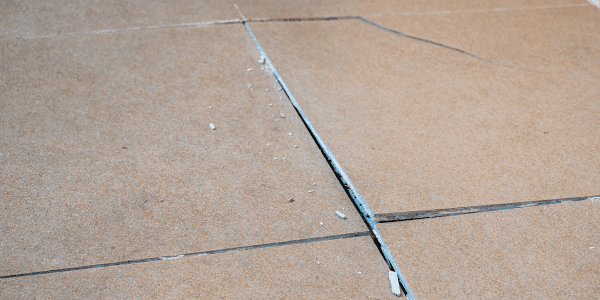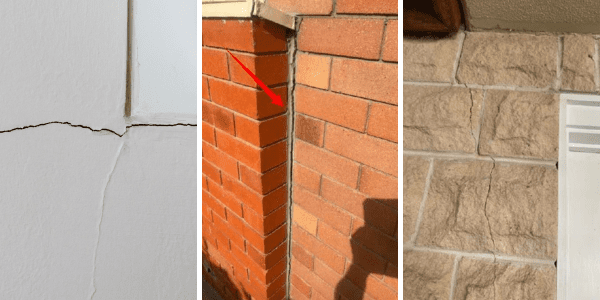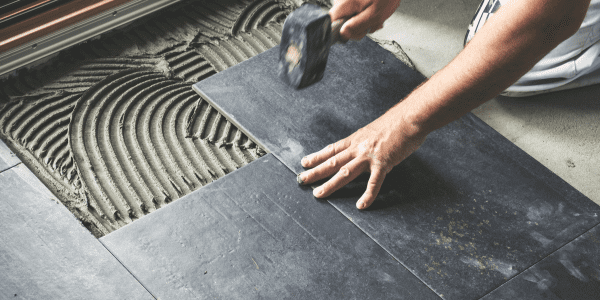Typical Defects Found During a Building and Pest Inspection
The most common defects found during inspections
In this blog, we outline some of the common defects found within building and pest inspection reports to give you a greater understanding of the defects to help make your decision.
1. Cracked tile(s)
Whether a cracked tile(s) is deemed to be a major or minor defect in the building and pest report comes down to its severity and location. Often, they are classed as a major defect due to the possible water ingress or health and safety issues that result from the cracked tile(s).
Water ingress is of particular concern if the cracked tile(s) occurs in a wet area. Obviously, water leaking through a cracked tile(s) in the bathroom can cause serious damage to the property. Moreover, water ingress through a cracked tile(s) is also conducive to a termite infestation as termites love damp areas.
If a cracked tile(s) has been deemed as a major defect in your building and pest inspection, we recommend getting the tile(s) repaired as soon as possible. We suggest contacting a licensed tiler for further recommendations for repairs and cost estimates.
2. Unsafe windows
Major defects are defined as items that impact the livability or safety of a property by Australian Standards. As such, windows that are fully functional can sometimes be classed as a major defect due to the safety hazard they present. Generally, it is only relevant for high-set buildings where the window height is considered unsafe.
This is because the Queensland Building Code has been updated over time. Things that were once considered compliant are now seen as uncompliant. It is the job of a building certifier (not a building inspector) to provide advice about whether a building is currently up to code.
Although our inspectors aren’t building certifiers, they will pay attention to windows and stairs to see if there are obvious safety concerns. Windows that are unsafe generally fall into 2 categories, which are:
- Windows that are less than 1.7 meters from the floor with more than a 2 meter external fall. This is considered a safety risk as someone could potentially fall out of the window causing injury or harm.
- Windows that are more than 2 m above ground level should either have restrictors or security screens fitted to reduce the risk of falls causing injury to people.
In either case, we recommend installing a security screen or a window bolt/restrictor at no more than 125mm opening. This can be done by a qualified security screen installer.
3. Cracks in walls, masonry and ceilings
There’s no doubt about it – cracks in buildings are unsightly! Whether it’s in the wall, masonry or ceiling, cracks are not something you want to see especially in the home you’re looking at purchasing. Understandably, many people think the worst when they see a crack in the building thinking it must have serious structural issues. At times this is true but more often, the cracks you see are typical settlement cracks.
Settlement cracks occur when the ground beneath the building moves due to the natural occurrence in the earth. This is totally normal and is considered typical by most building professionals. Most settlement cracks can be repaired with a simple patch and paint by a qualified plasterer. Due to the uncontrollable nature of the earth, the crack may re-open in the future from more settlement movements. If this should happen, we recommend getting the crack(s) reassessed before conducting more repairs.
Occasionally, a crack in the building either internally or externally may be deemed as a major defect.
All our inspections are completed in accordance with Australian Standards. These standards include strict categorization for cracks based on their size, which are:
- Hairline Cracks – less than 5.0mm
- Fine cracks that do not need repair
- Cracks that are noticeable but can be easily filled (generally settlement cracks)
- If the crack has occurred from settlement movement, doors and windows in the property can sometimes stick
- Cracks greater than 5.0mm but less than 15.0mm
- These cracks will require repair
- If it’s a settlement crack, doors and windows can stick and service pipes can begin to fracture
- Weather tightness (the building’s ability to keep out water) can often be impaired
- Major Cracks - greater than 15.0mm
- Extensive repair work is required likely to involve breaking out and replacing sections of walls
- Door frames become distorted
- Walls lean and bulge noticeably with some loss of bearing in the beams
- Service pipes are disrupted
For further advice and recommendations about the cracks found in your building and pest report, it is best to contact a structural engineer.
4. Drummy tiles
Drummy tile(s) is a term used in the building industry to explain the hollow, ‘drum’ sound that is emitted from a tile when stuck by a sounding tool. The drummy sound indicates that a tile(s) has become loose for structural or other reasons.
From a structural perspective, drummy tiles can occur from moisture exposure or a timber pest infestation. For example, if flooding, leaking or excessive moisture exposure over time has occurred then tiles will become loose. Likewise, if termites have attacked the wooden subfloor underneath or the substrate then the floor tiles are likely to become loose.
However, it is more common for drummy tile(s) to occur for other reasons, such as:
- Lack of or incorrect adhesive used during installation
- Inadequate bonding of the adhesive to the surface below the tile (a.k.a substrate)
- Changes in the weather that cause the substrate to expand or shrink
- Settlement movements in the foundation
- Wear and tear from high-traffic areas
Regardless of the cause, it is important to have drummy tile(s) rectified promptly. As it is impossible to tell exactly what caused the tile(s) to become drummy until it’s removed. For this reason, it’s best to have the tile(s) repaired in case the drummy tile(s) is caused by structural issues. It’s better to repair a few tiles now than find out later that there are costly structural issues causing the tiles to become drummy. As the saying goes, “it’s better to be safe than sorry”.
Drummy tile(s) can be repaired by a qualified tiler. The cost of drummy tile repairs will vary depending on the method of repair and the number of tiles requiring repairs.
Book a building and pest inspection today
If you’re looking a purchasing a new property, get peace of mind with a building and pest inspection from Dedant Building and Pest Inspections.
We have been servicing Brisbane, Redland Bay, Moreton Bay, Gold Coast, the Scenic Rim, Sunshine Coast, Ipswich and Logan since 2009.
Contact us on 07 3807 0122 or via our website.






